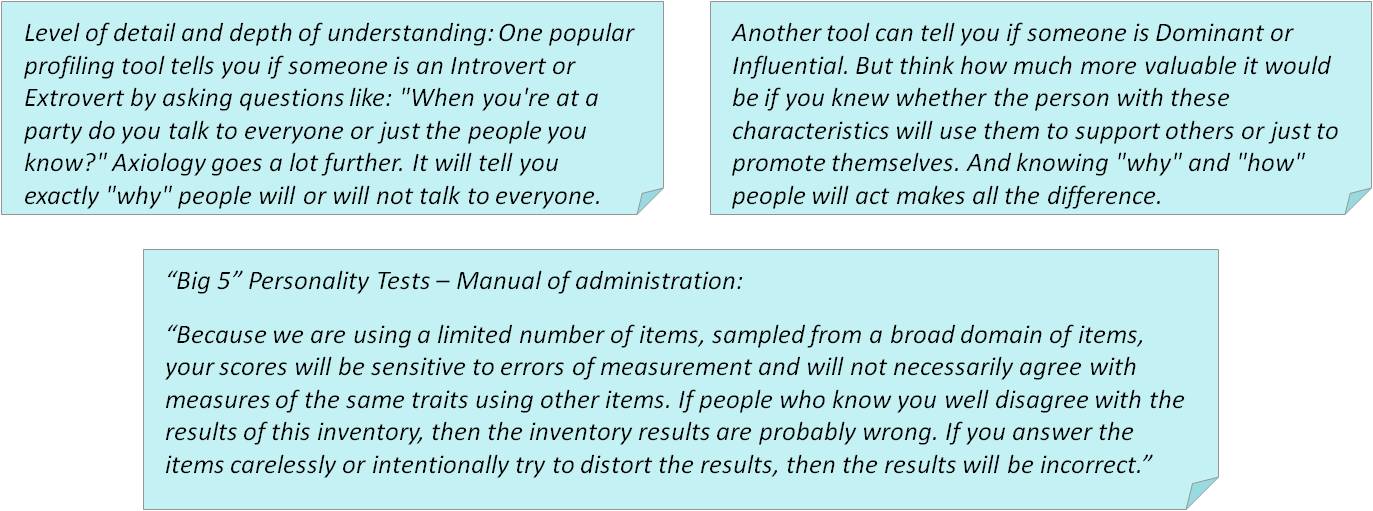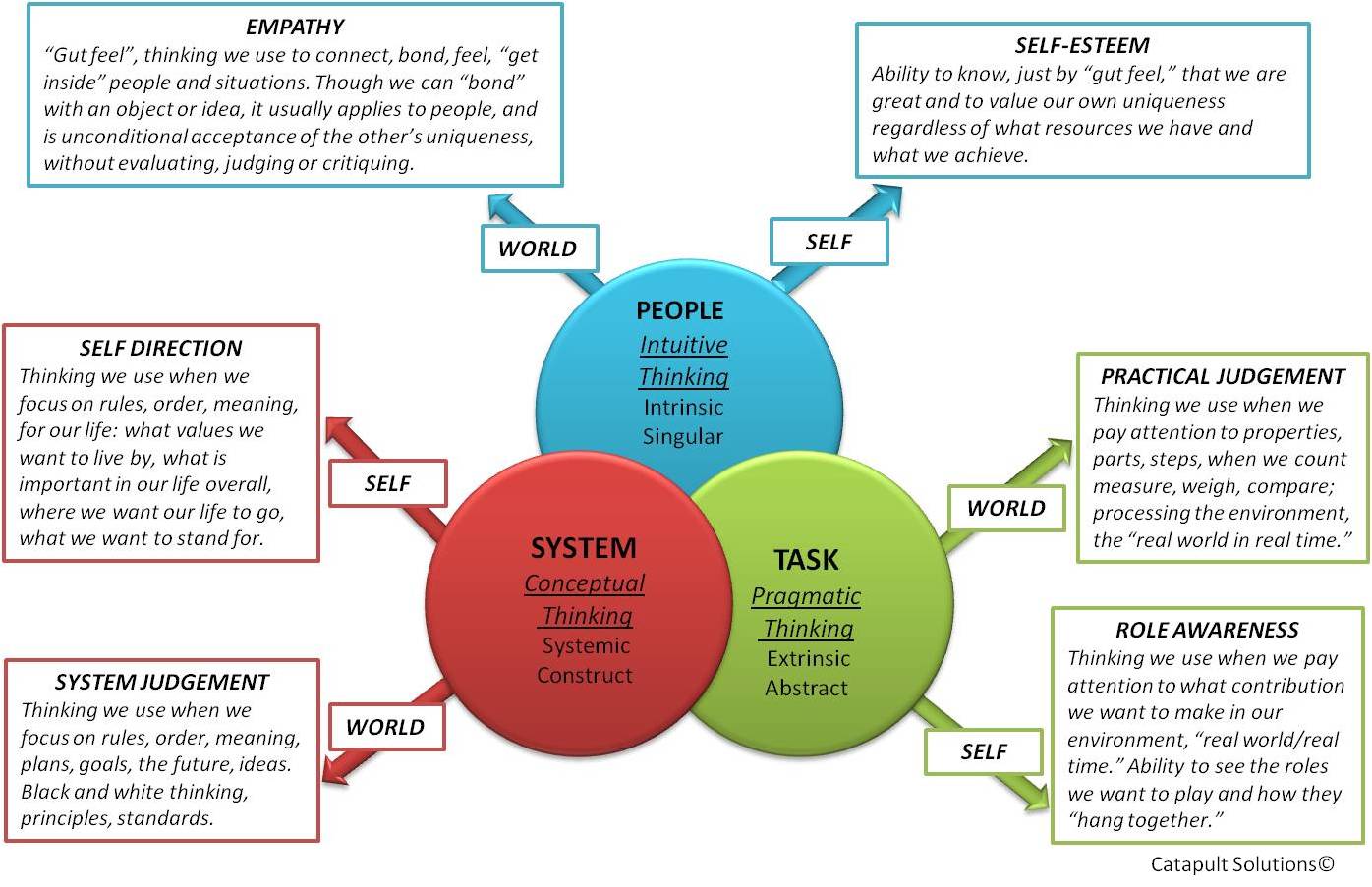Why Axiometrics®? Key Descriminators
History – What is Axiology?
The term “Axiology” is derived from the Greek word axiā meaning “value, worth” and logos, the Greek for study.
- Axiology, the science of human values, enables us to identify the internal valuing systems that influence our perceptions, decisions and actions – to clearly understand “why” we do what we do!
- Axiological profiling is a complex and extraordinary profiling tool which is based on axiology and the attribution of numerical values to human values.
- It can be undertaken on line in approximately 15 minutes and is an excellent tool for Board level, team and individual selection and development needs. It identifies both areas of strength and those for development; it can be tailored to focus on specific areas and given contexts.
Dr Robert S Hartman – the Founding Father of Axiology
- 1910 – Born as Robert Schirokauer in Berlin. Studied at the German College of Political Science, also at the University of Paris, the London School of Economics and the University of Berlin, from which he received an LL.B. degree.
- 1932 – Fled Nazi Germany, changed his surname to Hartman and worked for Disney.
- 1941 – Migrated to United States, became a citizen and did his doctoral work in philosophy at Northwestern University in 1946.
- 1955-1956 – Visiting Professor at Yale University.
- 1950-1957 – Chairman of the Commission on Peace, International Council of Community Churches. Served as Executive Director of the Council of Profit-Sharing Industries and wrote its first manual. Founder of the Deutsche Institute fur Social-Wirtschaftliche Betriebsgestaltung (industrial organisation). Also was the Founding sponsor of American Association for Humanistic Psychology.
- Late 1950s – Among first members of the Society for General Systems Research.
- 1971 – First President of the American Society for Value Inquiry, founded by Dr. James Wilbur, Research Professor of Philosophy at the University of Tennessee & National University of Mexico. Served as consultant for the practical application of Value Theory with AT&T, General Foods, General Electric and IBM.
- 1973 – Nominated for a Nobel Peace Prize in 1973 but died later that same year.
Dr Wayne Carpenter – From Axiology to Axiometrics® Profiling
- Wayne Carpenter was a student of Dr. Hartman at the University of Tennessee.
- Carpenter devoted himself totally to extending Hartman’s work, his life’s passion using Hartman’s unfinished papers.
- Hartman researched all decision theories and models from Aristotle to the present. His Value Science Theory formed the basis of all the decision theories – ‘A Universal Value Theory’.
- During 30 years of research Carpenter successfully expanded the mathematics of Dr. Hartman to account for ‘real life’ variables.
- This extension of Axiology is called Axiometrics(®) and is used to mathematically measure and assess specific capacities of an individual.
Axiometrics® can be used not only to predict the subject’s future performance but also to provide insight into their core competencies, talents and developmental needs.
Why Use Axiological Profiling?
- It is a scientifically proven, mathematically accurate assessment that objectively identifies how our mind analyses, interprets our experiences and it identifies how we are most likely to react in any given situation. Understanding how people think is critical to knowing how they will perform.
- It offers a simple and powerful way that shows you exactly why your people perform the way they do and provide the user, and organisation, with an accurate diagnostic tool upon which to build and deliver the most appropriate solution, be it learning or advisory.
- It can accurately identify the talents, performance problems and potential of people before you make critical decisions on recruitment, training and succession planning. (Knowing the underlying “thinking patterns” that influence performance allows you to put the right people in the right place for the right reasons.)
Why Choose Axiometrics® Over Other Types of Profiling?
- Not subjective – other personality assessments only give you what people are willing to say about themselves.
- No attempt to classify or group someone.
- A single Universal Norm, not one ‘created’ from a selection to validate a result.
- Highly validated worldwide.
- Not discriminatory for age, sex, creed or culture.
- Organising the statements takes most people less than 15 minutes, yet there are 6.4 quadrillion (6,400,000,000,000,000,000) possible outcomes.
Why is Axiometrics® Different?
The basic difference is that other profiling tools ask people to describe themselves, this introduces two main problems:
- Often people do not know themselves well. It is especially true of cognitive traits; few people give a lot of focus on how they think.
- There is strong pressure for presenting a positive picture of one-self, especially in hiring situations, re-organization, succession-planning. (This is why so many assessments have a “fake good” score which tries to “catch” people lying about themselves.) This need to look good is evident even in coaching and training situations.
Axiometrics® avoids both. The assessment statements are not about the person taking it – the person simply does a mental task which is tracked. The difference between agreeing or disagreeing with a statement or adjective about oneself (which are open to individual interpretation) and “a new car”, “a holy person”, “a uniform” (statements from the Hartman Value Profile) is clear.
 Characteristics of Self-reporting tools and 360 feed-back:
Characteristics of Self-reporting tools and 360 feed-back:
- Overlook the complexity of traits. Complexity refers to the fact that many instruments form categories that generalize about the individual and are often binary: either you are a thinker or a feeler. We know you can be both and that all three dimensions (Intrinsic, Extrinsic and Systemic) create a synergy that is unique for you.
- Developed through Inorganic connections. Self-reporting tools do not have the tight logic of the system. Axiometrics® is deductive rather than inductive; it does not collect data then group the data into categories that may or may not be organically related to each other.
- Built on norms such as supervisor norms or manager norms or sales norms. Axiometrics® is built on a simple norm that is an axiom about how people value. Everything is derived from the person’s unique deviation around that axiom. Thus our information goes deeper into universal human characteristics, measuring each person’s unique expression and can be against a given role or organisational context.
EEOC (Equal Employment Opportunities Commission) and Axiometrics®
EEOC CONSIDERATIONS
In the highly competitive world markets, managers must make every effort to reduce the time involved in locating a good employee and reduce the loss to the company when an employee quits or is terminated, with any money invested in training also lost. Therefore the use of screening instruments, psychological testing, personality assessments etc has become very popular in an attempt to help the manager make better hiring decisions.
In an effort to protect the rights of the citizens, the EEOC has established three requirements for any testing instrument used as part of the hiring decision process:
- The instrument must measure what it says it measures.
- The instrument cannot discriminate according to age, race, or sex.
- Whatever the instrument measures must have a direct application to the position being applied for.
The third requirement is the responsibility of the hiring organization to monitor. The other two are conditions of the instrument itself.
EEOC REQUIREMENT #1 – the instrument must measure what it says it measures.
The industry standard used for validating instruments for effectiveness and accuracy is the Minnesota Multi-Phasic Personality Inventory (MMPI). A 100% statistical concurrency between the MMPI and Hartman Value Profile, entitled “Concurrent Validity Study of Hartman’s Valumetrics and Value Science Assumptions as a Revolutionary New Basis for Modern Behavior Science Applications” was published in the VA practitioner by Dr. Leon Pomeroy and Dr. John Davis.
Another study performed by Dr. John Austin and Barbara Garwood, entitled “the Relationship of the Hartman Value Profile, Rokeach Value survey, Allpot-Vernon-Lindzey Study of Values and Kohlberg’s Theory of Moral Development” was presented to the National Association of School Psychologists in March, 1977. This study of the most prominent value measurement instruments validates the Hartman Value Profile in the measurement of value structures.
EEOC REQUIREMENT #2 – the instrument cannot discriminate according to age, race, or sex.
Full data is available on sample group and profiles for each element. In sum all statistics produced a significant difference of zero in the groups examined. In short:
AGE: The mean and standard deviation analysis of a random sampling of six (6)- one hundred (100) profile groups from a population of 22,000 profiles produced a mean standard error of 1.38 with a standard deviation of 1.56. An analysis of a 25-35 year old group yielded a mean standard error of 1.41 with a standard deviation of 1.63. An analysis of a 45-55 year old group yielded a mean standard error of 1.34 and a mean standard deviation of 1.40. These statistics produce a significant difference of zero in the groups examined.
RACE: The mean and standard deviation analysis of a random sampling of six (6) one hundred (100) profile groups from a population of 22,000 profiles produced a mean standard error of 1.35 with a standard deviation of 1.58. An analysis of a white group yielded a mean standard error of 1.26 with a standard deviation of 1.43. An analysis of a Hispanic group yielded a mean standard error of 1.44 with a standard deviation of 1.89. These statistics produce a significant difference of zero in the groups examined.
SEX: The mean and standard deviation analysis of a random sampling of six (6) one hundred (100) profile groups from a population of 22,000 profiles produced a mean standard error of 1.36 with a standard deviation of 1.49. An analysis of a male group yielded a mean standard error of 1.45 with a standard deviation of 1.62. These statistics produce a significant difference of zero in the groups examined.


